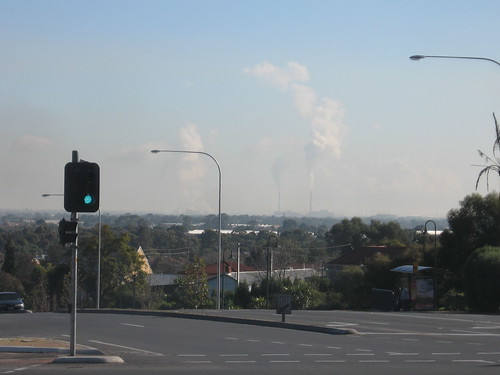Adelaide's Air Quality
Posted: Tue Dec 18, 2007 10:18 pm
Shocked to read this from adelaidenow.com.au. We Adelaidians pride ourselves on being cleaner than the other mainland cities. I have been noticing more smog and poorer visibility over the city recently and not just associated with the K.I. bushfires.
Adelaide's Air On The Nose
CARA JENKIN, ENVIRONMENT REPORTER
December 18, 2007 08:30pm
ADELAIDE'S air quality is worse than Sydney's, Melbourne's, Brisbane's and Perth's, figures show.
High levels of carbon monoxide, ozone and small particles have been found in Adelaide's air in concentrations above those detected in the larger cities.
But it is weather conditions rather than pollutant amounts that are believed to be the major cause of the increased pollution levels.
The Environment Protection Authority also cites bushfire smoke and the mainland's oldest car fleet as contributing factors.
Australian Bureau of Statistics figures show Adelaide's air has higher carbon monoxide concentrations than the air in Sydney, Brisbane and Melbourne and is second to Sydney in the highest daily concentration of ozone. Adelaide air-monitoring sites recorded six days of excessive particles, three times as many days of excessive particles than recorded in Sydney and Brisbane, and the third-highest concentration of air particles.
Flinders University honorary research fellow, Associate Professor Jorg Hacker, said large amounts of ozone, a poisonous substance, often formed from bushfire smoke after a chemical reaction between air particles and the smoke. He said ozone and other pollution was often trapped over the city by Adelaide's wind patterns and location between the Hills and coast.
"If you have a bushfire situation, either in the Hills or on Kangaroo Island, the gully winds or easterly winds will transport that right over Adelaide.
"The morning peak-hour traffic generates part of the pollution and that gets blown out to sea by gully winds and blue skies, high temperatures and sunshine help generate smog.
"Then the sea breeze brings it all inland to the Hills in the afternoon."
People's EPA chair Gary Goland said the results could be the tip of the iceberg and more monitoring was needed to determine peak levels of air pollution.
"The EPA is only looking at average levels for the day, but it is actually peak levels that initiate a chemical response," he said. "We need to be looking more closely at the environment and what the measures are".
